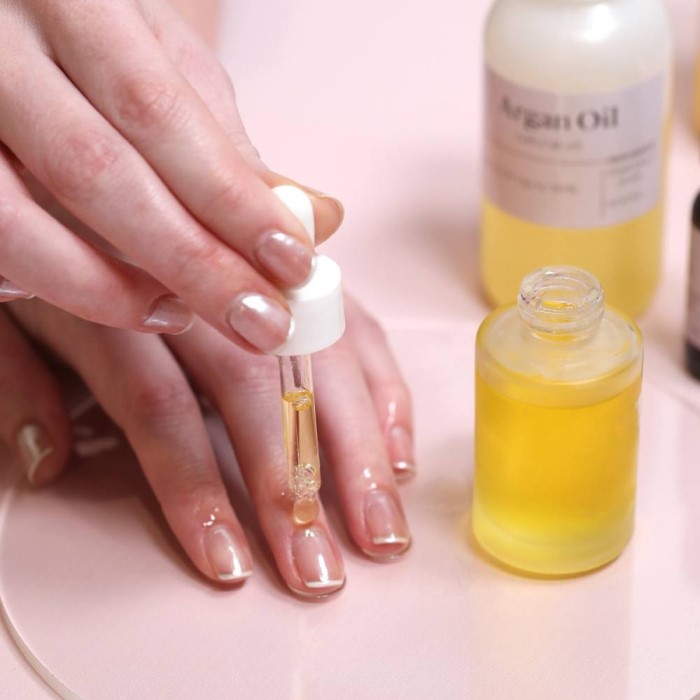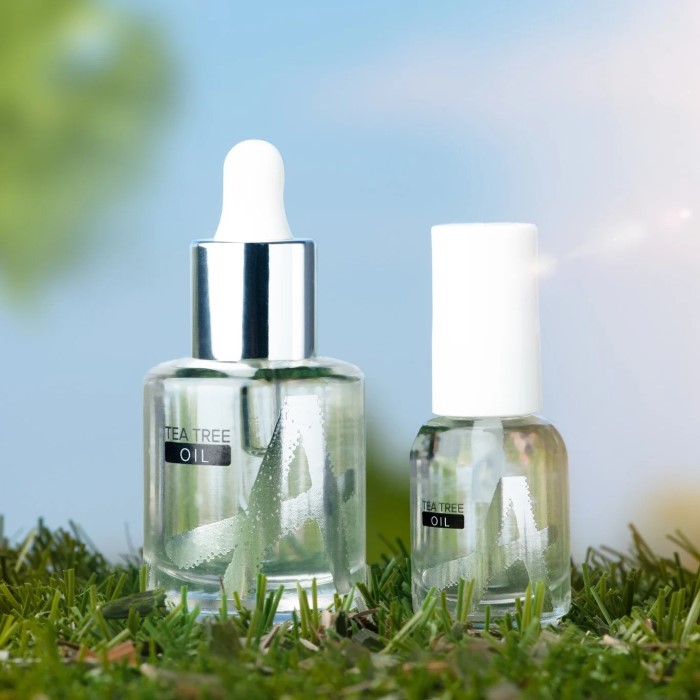
How to Use Tea Tree Oil for Nail Fungus: Treatments Revealed
Introduction: Understanding Nail Fungus
Nail fungus, medically known as onychomycosis, is a common condition that affects many individuals worldwide. This fungal infection can cause nails to become discolored, brittle, and thickened, often leading to discomfort and self-esteem issues. Several treatment options are available, ranging from prescription medications to over-the-counter solutions. However, many people are increasingly turning to natural remedies. One of the most popular natural solutions is tea tree oil. This essential oil, known for its potent antifungal and antimicrobial properties, offers a safe way to tackle nail fungus. In this article, we will guide you on how to use tea tree oil for nail fungus, exploring its benefits, application methods, and frequently asked questions.

What is Tea Tree Oil?
Tea tree oil is an essential oil extracted from the leaves of the Melaleuca alternifolia tree, which is native to Australia. With a long history of traditional use among Indigenous Australians, tea tree oil has gained significant recognition in modern alternative medicine. Here are some essential characteristics that make tea tree oil a popular choice for treating nail fungus:
- Antifungal Properties: One of the most compelling reasons to use tea tree oil for nail fungus is its antifungal activity. Research has shown that tea tree oil can effectively inhibit the growth of various fungi, including those responsible for nail infections.
- Antiseptic Effects: Tea tree oil is not only antifungal; it also possesses antiseptic qualities. This means it helps protect against secondary infections that can occur as a result of damaged or compromised nails.
- Natural and Safe Option: Unlike many commercial antifungal creams that may contain harsh chemicals, tea tree oil is a natural product. When diluted properly, it is generally safe for most skin types, making it a suitable option for those seeking alternative treatments.
- Anti-Inflammatory Benefits: In addition to its antifungal properties, tea tree oil has anti-inflammatory effects. This feature is particularly beneficial for soothing irritations and redness around the infected nail.
- Versatile Applications: Beyond treating nail fungus, tea tree oil can also be used for various skin ailments, making it a versatile addition to your natural health toolkit.
Benefits of Using Tea Tree Oil for Nail Fungus
Understanding the specific benefits of tea tree oil can motivate you to incorporate it into your nail care regimen. Here are some of the advantages of using tea tree oil for nail fungus treatment:
- Effective Treatment: Studies indicate that tea tree oil can be as effective as some pharmaceutical antifungal treatments. Its ability to penetrate the nail can facilitate healing from the inside.
- Promotes Nail Growth: As the fungus clears, tea tree oil may help promote healthier nail growth. The oil nourishes the surrounding skin and nails, resulting in a more vibrant appearance.
- Affordable and Accessible: Tea tree oil is widely available in health stores and online, making it a convenient choice for many individuals. Additionally, it is often more affordable than some clinical treatments.
- Minimal Side Effects: Tea tree oil is generally well-tolerated. Unlike some topical antifungals that may cause skin irritation, tea tree oil, when diluted, typically has minimal side effects.
- Holistic Approach: Using tea tree oil aligns with a holistic approach to health. Many individuals prefer natural remedies that not only address symptoms but also promote overall well-being.
How to Prepare for Using Tea Tree Oil
Before you can harness the benefits of tea tree oil for nail fungus, it’s essential to prepare properly. Here are some steps to follow before application:
- Gather Necessary Supplies: For the application, you will need high-quality tea tree oil, a cotton ball or cotton swab, a small bowl for mixing (optional), and a carrier oil like coconut oil or olive oil if you choose to dilute the tea tree oil.
- Clean Your Nails: Start by washing your hands and feet thoroughly with soap and water. This step helps to eliminate dirt and debris, ensuring that the tea tree oil can penetrate the nail effectively.
- Trim and File Nails: If your nails are thickened or long due to fungus, trimming them can improve the treatment process. Shorter nails allow better access for the tea tree oil and improve effectiveness.
- Soak Nails in Warm Water: Soaking your affected nails in warm, soapy water for about 10-15 minutes can soften the nails and surrounding skin. This can help prepare the nails for the treatment and may enhance absorption.
- Patch Test (Optional): If you’re using tea tree oil for the first time, it’s a good idea to conduct a patch test. Apply a small amount of the diluted oil to a less sensitive area of skin to check for any adverse reactions.
How to Use Tea Tree Oil for Nail Fungus
How to use tea tree oil for nail fungus? Now that you’re prepared, let’s explore how to effectively use tea tree oil for nail fungus treatment:
- Direct Application:
- Soak a Cotton Ball: Take a cotton ball or swab and soak it in pure tea tree oil. If you’re using a diluting method, mix a few drops of tea tree oil with a carrier oil like coconut oil in a small bowl.
- Apply to Affected Areas: Press the soaked cotton ball against the infected nail and the surrounding skin. Ensure that the areas are well-covered, as this will maximize absorption.
- Massage Gently: Gently massage the oil into the nail bed and surrounding area. This action can help the oil penetrate the nail better.
- Leave the Oil On:
- Allow the tea tree oil to remain on the nails for at least 30 minutes. For optimal results, consider leaving it on overnight. You can use a band-aid or tape to secure the cotton if you are applying it before bed.
- Frequency of Application:
- For optimal benefits, repeat this application two to three times a day. Consistency is vital in treating nail fungus effectively, as it allows the antifungal properties to take action over time.
- Monitor Your Progress:
- Keep an eye on the condition of your nails. Look for signs of improvement like reduced discoloration, decreased thickness, and new nail growth over the coming weeks.
- Combine with Other Treatments:
- While tea tree oil can be effective on its own, consider combining it with other antifungal treatments or maintaining a good nail hygiene routine for enhanced results.
How Long Does Tea Tree Oil Take to Work on Nail Fungus?
How to use tea tree oil for nail fungus? Many users wonder about the timeframe for tea tree oil to start working on nail fungus. The timeline can vary based on individual circumstances, but here are some insights:
- Initial Improvements: Some users may notice initial signs of improvement within two to four weeks of consistent application. This can include less discoloration, decreased irritation, and improved nail texture.
- Complete Resolution: Depending on the severity of the fungal infection and individual response to treatment, it may take several weeks to a few months for complete resolution. Ongoing treatment may be necessary, especially for chronic infections.
- Factors Influencing Timeframe: The duration for tea tree oil to work effectively can be influenced by several factors, including:
- Severity of the fungal infection
- Overall health and immune function of the individual
- Consistency and frequency of treatment application
How Long to Leave Tea Tree Oil on Your Nails?
When using tea tree oil for nail fungus, many users want to know how long to keep the oil on their nails for optimal results:
- Recommended Duration: It is generally recommended to leave tea tree oil on your nails for a minimum of 30 minutes. For the best results, consider leaving it on overnight.
- Daily Routine: Regular, daily application is crucial. Aim to apply tea tree oil two to three times per day until the infection shows significant improvement.
- Post-Application Care: After leaving tea tree oil on your nails for the recommended time, you can gently wash the area with soap and water to eliminate excess oil if desired. Allow nails to dry thoroughly before reapplying.
FAQs About Using Tea Tree Oil for Nail Fungus
Can you put straight tea tree oil on toenail fungus?
Yes, you can apply straight tea tree oil directly to toenail fungus. However, if you have sensitive skin, it is advisable to dilute it with a carrier oil to reduce the risk of irritation.
How long do you leave tea tree oil on your nails?
It is recommended to leave tea tree oil on your nails for at least 30 minutes. For optimal results, consider applying it before bedtime and allowing it to remain on overnight.
Conclusion: Embracing Tea Tree Oil for Healthy Nails
In conclusion, learning how to use tea tree oil for nail fungus offers an effective, natural approach to tackling this common issue. With its powerful antifungal properties and ease of use, tea tree oil stands out as a valuable remedy in your fight against nail fungus. By following the preparation and application techniques outlined in this guide, you are well-equipped to improve your nail health.
Consistent application and proper care are paramount to seeing results, so remain patient and diligent in your efforts. As you embrace this natural solution, remember that nails can take time to heal fully, especially when addressing fungal conditions. With tea tree oil as part of your skincare arsenal, you empower yourself to tackle nail fungus safely and effectively, paving the way for healthier, more beautiful nails in the future.




